[javascript protected email address]
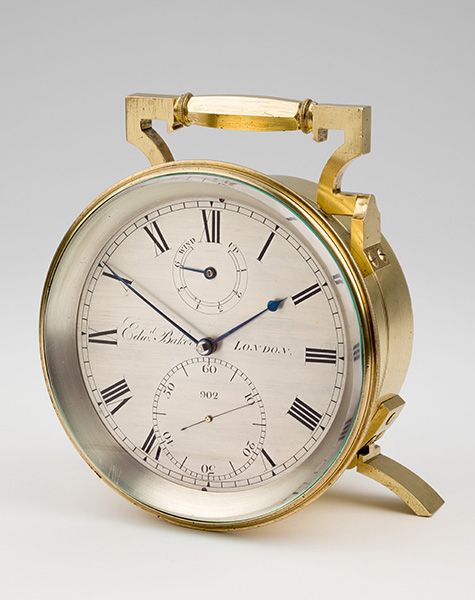
Edward Baker, London No. 902

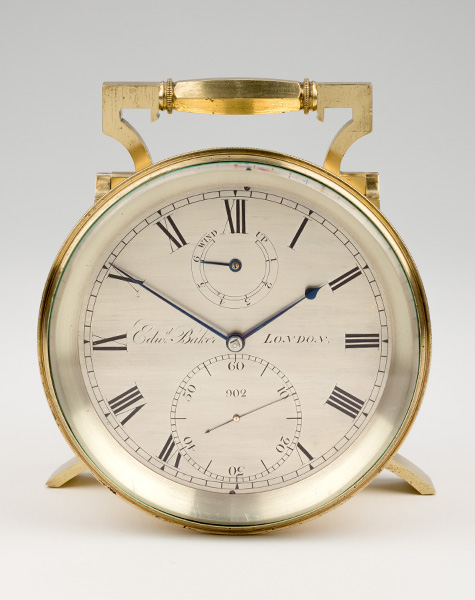
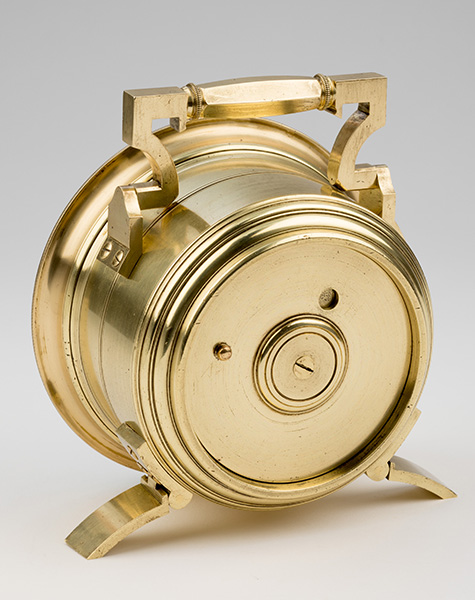
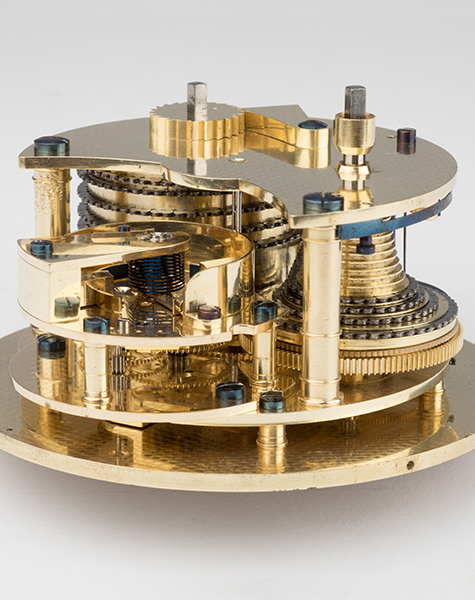
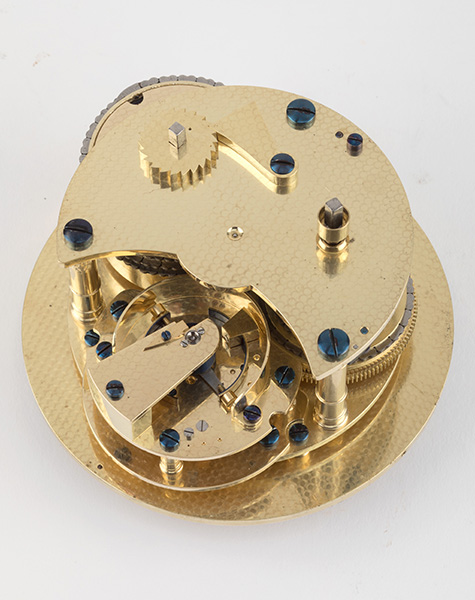
Circa 1815
Sold
6¼ inches (16cm) high, handle up
A rare brass-cased 8-day mantel chronometer. Circa 1815 – converted to mantel chronometer circa 1880 CASE Original lacquered brass bowl and bezel with the addition of a fine quality folding handle with faceted, milled central section and folding feet to the base. DIAL 4½ inch diameter silvered dial signed Edw. Baker LONDON 902 with Roman chapters with pretty blued steel hour and minute hands, subsidiary seconds at VI with delicate blued steel hand, up/down sector beneath chapter XII. MOVEMENT The movement with spotted brass plates, the main assembly carries the spring barrel, fusee and centre wheel, the sub assembly carrying the remainder of the train, the spring foot detent escapement of typical Earnshaw type, the bimetallic balance wheel with segmental compensation weights and blued steel helical balance spring. Edward Baker, 1785-1821 Baker was a fine watch and chronometer maker who worked in White Lion Street, London from 1785-1805; then Angel Terrace in Islington, London up until his death in 1821. Baker was a fairly prolific maker, one of his chronometers, number 681 was later used during the Artic Expedition in 1852 on HMS Assistance, whilst looking for Robert Le Mesurier McClure, who was trying to find the North West Passage. These converted ‘Mantel chronometers’ were a clever way to continue the use of a fine quality timepiece when its wood case had either been damaged or lost. This particular one has a fine quality which bears more than a little resemblance to the handles that Dent employed on a few of his special carriage clocks; those used on the very small series of nickel-plated Nicole Nielsen carriage clocks with tourbillon escapement. It is more than possible that the same company who made the special cases for Dent and Nicole Nielsen also converted this chronometer to a mantel timepiece
